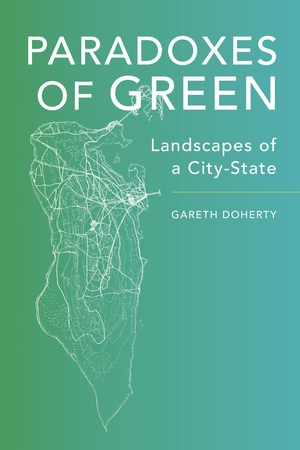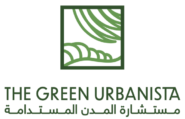The obsession with green in cities could be better managed if the binary of desert versus green could be broken.
Doherty, 2017, p. 147
Three years ago, I posted about a need for a more sustainable approach to landscaping, particularly green spaces, in the GCC. Since then, the provision of urban green spaces has gained more significance and media attention with grand plans for new parks being announced recently in a number of cities (e.g. Riyadh, Dubai). This is undoubtedly linked to the rising importance of the wellbeing and quality of life agendas, locally and globally.
Overall, the rise in importance and number of public parks and open spaces is progress; however, there are two fundamental concerns in my mind. First, I am yet to come across a city in the region with a clear and comprehensive planning approach to public parks and open spaces. By that I mean an approach which considers requirements of various communities across the city and plans the provision of a diverse range of spaces accordingly, ensuring accessibility and functionality at various spatial scales (e.g. city, district, neighbourhood). As an example, the Open Space Strategy for the City of London (2015) provides policies and guidelines for open space provision to meet various social and environmental needs (recreation, heritage preservation, biodiversity protection and awareness…etc.), aligning with the hierarchy of open spaces as categorised in the London Plan. Not only are such strategies largely absent from the region, the need for them is generally not appreciated or acknowledged.
My second concern is related to design aspects, such as designing for low water use, shade, pedestrian access, and inclusivity (e.g., across age and accessibility levels). Without these sustainable design considerations being front and center, we risk public parks and open spaces under-used (if not unused) assets, which are costly to maintain from an economic and environmental perspective.
More broadly, there are deeper questions around societal values and expectations related to green spaces which are important to consider in order to address the above concerns. It is these deeper questions which Professor Gareth Doherty vividly explores in his thought-provoking book Paradoxes of Green: Landscapes of a City-State.

The book is based on the findings of a year-long ethnographic field study of the color green in the city-state of Bahrain. This approach provides a new lens for examining the variety and function of “green” in a desert environment and, more importantly, the human values and perceptions linked to it. I draw out below some of Doherty’s arguments and findings which are directly relevant to the discussion around sustainable planning and design of green open spaces in the GCC.
The main paradox highlighted by the book is that “to be green is often presented as a moral imperative, yet provision of urban greenery can be morally questionable, especially in arid environments such as Bahrain” (p. 1). Doherty provides an example of how this seemingly obvious paradox is often ignored in strategic urban plans and policies. A recent master plan for Bahrain identified ten imperative objectives, the ninth was turning the country green, and the tenth was promoting a sustainable future (p. 51). There are numerous similar examples from elsewhere in the region.
Referring to old agricultural and community practices, Doherty notes that greenery in Bahrain has “historically required a complex physical, customary, and legal infrastructure” to be feasible. However, such governance methods do not exist today, and the economic and environmental costs of prolific greening utilizing desalinated water are rising. But what economic, political, and social values do these green spaces have that help justify these costs (p.59)?
Doherty highlights that while green is commonly the antidote to urban, in the desert areas such as Bahrain, greenery “is an indicator of human settlements, not relief from the same, due to cultivation of the land through agriculture, orchards, and gardens” (p. 77). In Bahrain, the city was previously separate from the countryside; however, this changed in the early 1970s with the oil boom. People “mostly stopped going out to the country gardens on the weekends… In fact, people started moving to the gardens and building villas” (p. 85). This observation raises a few questions: are public green spaces in villa communities needed? If provided, can they be used to replace gardens with private villas, thus providing a more compact and sustainable housing typology, particularly for national housing in the GCC?
There are also important cultural heritage values linked to date palms, although Doherty notes the staggering discrepancy between the official number of date palms in Bahrain (572,000) and the unofficial estimates (30,000). It is unlikely that Bahrain was ever actually a “Land of one Million Palms.” In reality, how culturally essential/important are date palms in urban landscapes? This is a particularly important question given the significant amount of water and maintenance required for date palms and their limited value in terms of providing shade, given the shape and height of their canopy. There are, of course, questions related to food production and food security that are worth exploring as a separate topic.
Doherty identifies the different values attributed to the various shades of green in Bahrain. The older ‘grey-green’ date palm groves that form a greenbelt are viewed as “dirty” and backward, hindering modern development. Nevertheless, according to the book’s author, these areas are iconic national assets, “harboring intricately balanced ecologies, history and social life.” By contrast, the luscious green of lawns, street medians, and roundabouts is popular and perceived as “adding value.” Doherty remarks that “it is not a problem with the green per se, but a problem with the shades of green that people want” (p. 96)
It should not just be green versus desert or green versus the concrete of the city. The paradoxes of urban greenery are environmental, political, aesthetic, and technological insofar as they are interrelated. Solutions are required to work with green, in both senses of the word, rather than against it. Particular places require their own solutions; there cannot be a universal solution to the ideas of a more ecological city.”
Dohery, 2017, p. 147
Developing a robust and comprehensive approach to the planning and design of open spaces, particularly green open spaces, in the Gulf requires an understanding of the values attributed to green in the desert. This then needs to be followed with an exploration of sustainable and innovative strategies for delivering this value while reducing the associated environmental and economic costs. Research around the true value of green to various communities in a city would be a good place to start.


Hi Huda, great post! I haven’t read Doherty’s book but I think you present the author’s points very clearly.
“..Are public green spaces in villa communities needed?”
The argument is valid…do you think a cultural perspective may impinge on its practicality though? I am guessing that elderly citizens would surely prefer to walk around in their villas with grandchildren. Then we need to think about people of determination, or those with mobility or health limitations.
I think there’s no ‘no throwing out the baby with the bath water’for or against villa gardens. Sustainable water use or reuse, recycling home AC and grey water for irrigation may help absolve these gardens of their ‘crime’. I totally agree with you when you say we need to explore sustainable and innovation strategies. It takes a special kind of professionalism to see problems as pathways to innovative solutions.
Thanks for sharing!
Thank you Daniel and apologies for the delay in response (somehow missed this comment!). You’re right, it’s about finding innovative solutions to get to a more sustainable outcome of green/nature spaces in arid cities such as those in the GCC.